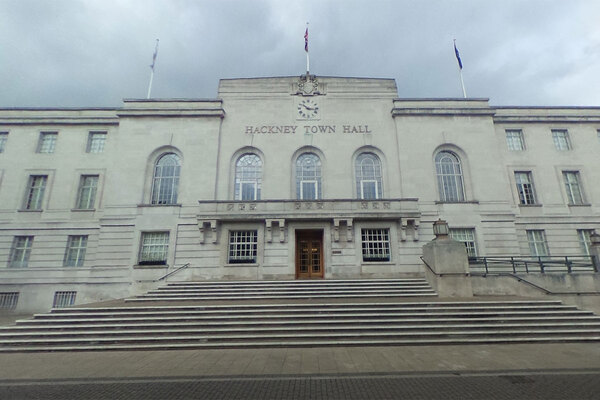Nearly 56,500 households live in temporary accommodation in London. What can be done to find more homes?
London rents have risen 17% in the past year. Add a cost-of-living crisis and a reduction in supply of affordable housing and it’s no wonder that 120,000 families in London can’t afford a home. Capital Letters is a partnership with London boroughs to help change this. Sue Coulson, its CEO, explains how

In association with:

As we head into winter and pressures mount around the cost of living, increasing numbers of UK families will be forced into temporary accommodation, or run the risk of becoming homeless.
This problem is no more acute than in London, where 59% of all households who rely on temporary accommodation live, representing nearly 56,500 households, including 75,580 children, according to the Centre for London thinktank.
Further data from the Combined Homelessness and Information Network found that 84% of those accommodated between July and September in 2021 were placed in emergency or temporary accommodation as councils struggled to secure affordable, long-term homes. It is against this backdrop that Inside Housing spoke to Sue Coulson, chief executive at Capital Letters, to explore what can be done to ease the mounting pressure on London councils.
How has the four-year freeze to the Local Housing Allowance (LHA) – which provides housing benefit for private renters – and the £23,000 benefit cap for London households impacted families and councils’ ability to deliver affordable homes?
The LHA freeze in 2016 saw the gap between benefit support and housing costs widen in London. In 2020, when the freeze was lifted, the supply of homes at LHA rates for homeless families improved because it enabled landlords to receive a higher rent. However, this action meant 120,000 families, whose benefits were capped at the same time, couldn’t afford homes on LHA rates.
This, coupled with a 17% increase in London rents between August 2021 and August 2022 (according to research by Savills), has reduced the supply of affordable homes as landlords are able to command higher rents on the open market. Policy in Practice research further shows there is no property in London that’s affordable for a family with two children who are benefit capped. For landlords, this makes renting to someone at LHA levels unattractive, particularly if they are perceived to be risky tenants because they’re on benefits or low income.
Could tenant support make the difference between a tenancy succeeding or failing for low-income families in the private rented sector (PRS)?
It’s critical and should be approached with both the tenant and landlord in mind. There’s increasing research from the likes of The Smith Institute and the University of York that shows how tenancy support is crucial to ensuring a tenancy is successful, but it’s equally important for landlords to have that same benefit. So, ensuring landlords have somewhere to go if there is a problem with the tenancy, or to provide them with the comfort they will receive their rent on time, is a critical part of sustaining tenancies. From a Capital Letters perspective, this is why we offer this service throughout the tenancy (typically two years) and check in on tenants and landlords every quarter.
Sue Coulson joined Capital Letters in June 2019 as its first employee and CEO. She led the establishment of the company, including growing membership from 13 to 21 London councils and staff numbers to 95.
She has extensive experience in social housing and is also a non-executive director of Westward Housing Group. Prior to Capital Letters, Ms Coulson was director of partnerships at Rentplus UK, another start-up providing affordable rent-to-buy homes.
Is the Decent Homes Standard extension to the PRS having an impact on the supply of affordable homes in the capital?
I think everyone would agree that the standard of homes for rent in London should be to a good level for everyone – whether you’re vulnerable and at risk of homelessness or otherwise. Still, it’s fair to say the Decent Homes Standard is likely to have unintended consequences, which could further impact supply.
As a landlord, when you’re asking for low rents, you haven’t got a lot of capacity to do the work required. With changes to the tax regime and mortgage rates also on the rise, private landlords’ income is being squeezed further, which is causing a number of them to sell up.
How could funding be better leveraged to help landlords bring properties up to Energy Performance Certificate (EPC) Band C or B and stem the loss of housing?
A way to help would be through grant or loans to do the necessary work. So, could there be a mechanism in place that enables landlords to access grant to improve the EPC level of their properties? Or, could we consider a tiered system, where landlords who have improved the EPC level can rent their properties at higher LHA levels, given that these homes would be cheaper for families to run? What’s clear is there is no ‘one’ solution – we have to be more creative with our approach to stemming the loss of housing and increasing supply.
Can the sector turn to institutional ESG investment to increase housing supply in London?
Absolutely. The range of investors we speak to want to do something good with their money, while of course making a profit – which is not new, as social housing was built on 5% philanthropy. They see housing as a solid return on investment. But we need to be more creative about how we access that money and invest it. That’s why we’re working with two all-party parliamentary groups to launch an inquiry, looking at the prospects of converting commercial and office space into good-quality affordable housing. This will be an evidence-based approach, where we’ll run sessions and hear from experts across the disciplines to see how it could work in practice, the challenges and opportunities, and whether people would be prepared to invest.
How are partnership vehicles like Capital Letters being used to help London boroughs tackle these issues?
Capital Letters has a unique pan-London view and strategic oversight of the housing market. We have developed a joint strategic Capital Plan with our members, setting out actions to increase supply and drive change, which we are implementing through test-and-learn pilots. This has the potential to be a real game-changer, particularly in the current challenging environment.
We act as a broker between councils and landlords to increase the supply of PRS homes for our members to house those most in need, providing one access point for landlords, making it easier for them and reducing competition between boroughs for a scarce resource. We pool the procurement activity of London boroughs, providing an additional supply of good-quality accommodation. Before a property is offered to a council, we inspect it and may require landlords to do work, so it meets required standards. We also agree the LHA rent and incentive paid by the council.
What can councils do differently to support the challenges they face in generating new supply?
It would be hugely beneficial for councils if they were able to work more flexibly with private partners, including working with developers during the planning phase of a scheme, or looking at how they could be lighter on their feet to take advantage of opportunities.
This principle applies to the existing PRS. There is a lot of competition, with councils paying high incentives to landlords for properties because they are desperate to get them – understandable given the rise in homelessness and commensurate costs. Working with third parties such as Capital Letters can help to broker conversations. We think of our service as a ‘three-legged stool’, where the needs of the landlord, council and tenant are kept in balance, focused on finding the right outcome for all three, while housing as many tenants as possible.











